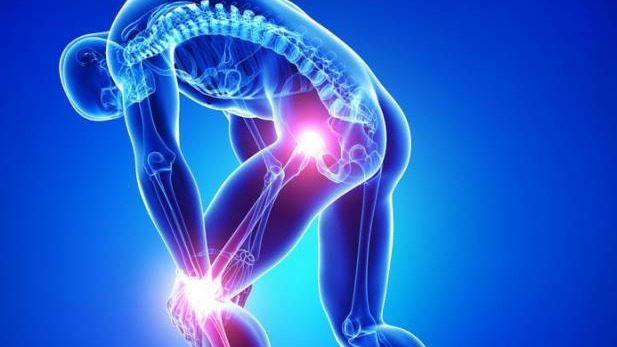Contents
Algodystrophy: what is it?
Definition of algodystrophy
THEalgodystrophy, also called ” reflex sympathetic dystrophy ” or ” complex regional pain syndrome (SRDC) ”is a form of chronic pain that mostly affects the arms or legs. It is a rare disease. Pain occurs following a fracture, blow, surgery or infection.
Causes
The causes of algodystrophy are still poorly understood. They are believed to be in part due to a malfunction or damage to the central nervous systems (brain and spinal cord) and peripheral (nerves and ganglia).
Many cases occur after trauma to an arm or leg, such as a fracture or amputation. Surgery, a blow, a sprain or even an infection can also cause algodystrophy. A cerebrovascular accident (CVA) or a myocardial infarction can also be responsible. Stress can also act as an aggravating factor in severe pain.
Type I algodystrophy, which affects 90% of cases, occurs following an injury or disease that does not affect the nerves.
Type II algodystrophy is triggered by damage to the nerves in injured tissue.
Prevalence
Algodystrophy is found at any age in adults, on average around 40 years. The disease very rarely affects children and the elderly.
The disease affects women more frequently than men. We are talking about 3 women affected for 1 man.
Symptoms of algodystrophy
Usually the first symptoms of dystrophy that appear are:
- A severe or stabbing pain similar to a needle stick and a burning sensation in the arm, hand, leg or foot.
- Swelling of the affected area.
- Sensitivity of the skin to touch, heat or cold.
- Changes in the texture of the skin, which becomes thin, shiny, dry and withered around the affected area.
- Changes in the temperature of the skin (colder or warmer).
Later, other symptoms appear. Once they have appeared, they are often irreversible.
- Changes in skin color ranging from mottled white to red or blue.
- Thick, brittle nails.
- An increase in sweating.
- An increase followed by a decrease in the hairiness of the affected region.
- Stiffness, swelling and then deterioration of the joints.
- Muscle spasms, weakness, atrophy and sometimes even muscle contractures.
- Loss of mobility in the affected region.
Sometimes algodystrophy can spread elsewhere in the body, such as the opposite limb. Pain can intensify with stress.
In some people, symptoms can last for months or years. In others, they go away on their own.
People at risk
- Algodystrophy can present at any age.
- Some people have a genetic predisposition to develop algodystrophy.
Risk factors
Smoking.
Our doctor’s opinion
THEalgodystrophy fortunately is a rare disease. If, following an injury or fracture to an arm or a leg, you develop symptoms of algodystrophy (severe pain or burning sensation, swelling of the affected area, hypersensitivity to touch, to heat or cold), do not hesitate to consult your doctor again. Complications of this disease can be very bothersome and lead to chronic pain. However, the earlier the treatment is applied, the more effective it is, whether through a rehabilitation program or the use of medication. Dr Jacques Allard M.D. FCMF |










